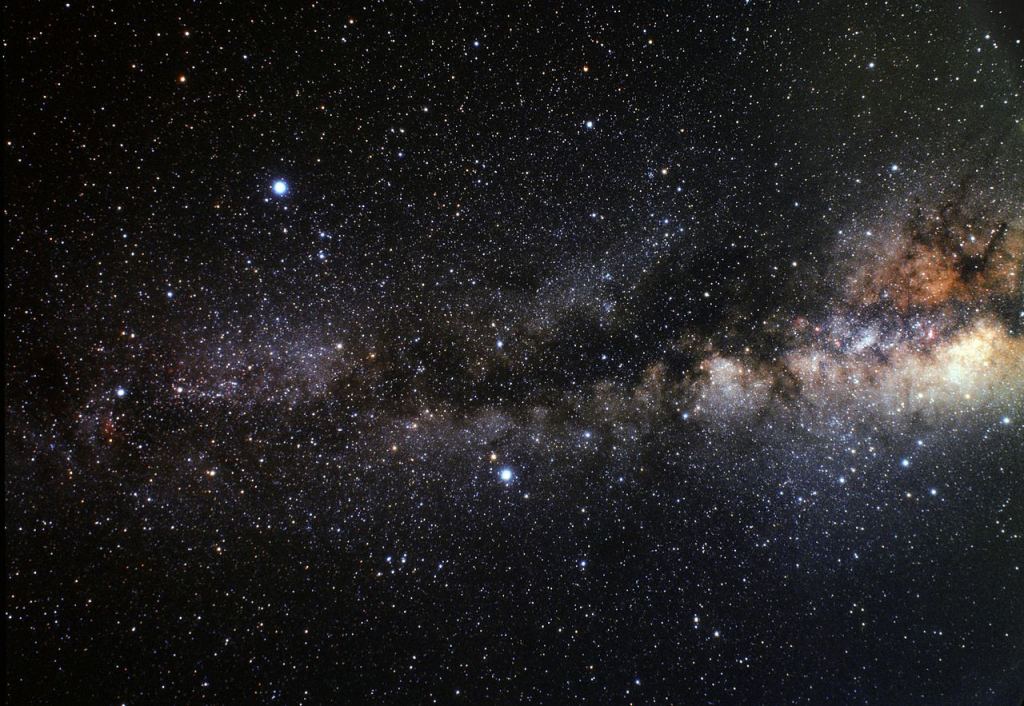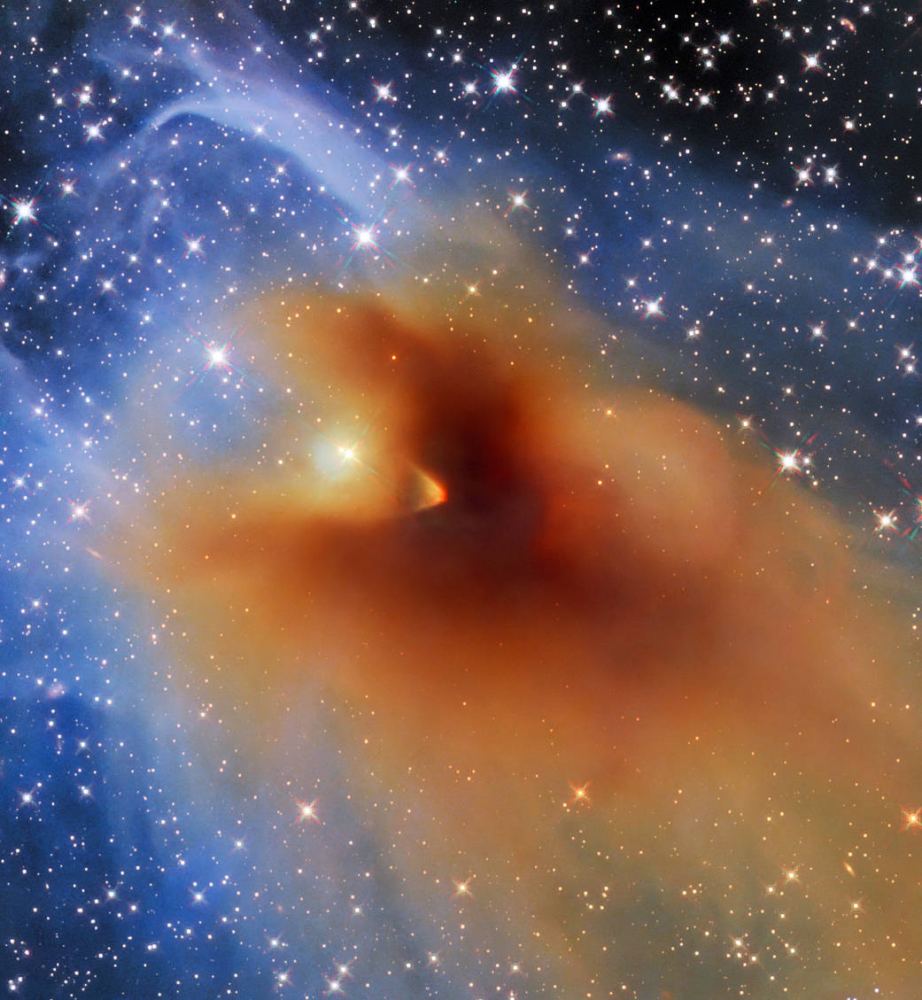The process of star birth begins in a shroud of gas and dust. Hubble Space Telescope (HST) excels in showing detailed views of these stellar crêches because there’s still a lot to learn about them. Its latest image shows an object called a “dense core”, where a stellar embryo could already exist.
In HST’s view, we see the outside of the crêche—a region called CB130-3. This dense core lives up to its name; it’s so thick that we can’t see into the center. But, it’s giving us a glimpse into the complexities of star-making machinery.
This cloud of gas and dust and its hidden stellar embryo lie in a filament of gas and dust located in the direction of the constellation Serpens. It’s in an area called the Aquila Rift region and lies about 650 light-years away from us. This site and other places in the galaxy where nebulae are forming stars are of great interest to astronomers seeking to understand all aspects of star birth. It has previously been observed in radio and infrared wavelengths, as well as optical observations.

Dense Cores Form Baby Stars
So, what happens during star formation, and what role does the dense core play? Star birth is lengthy and these cores are only one part of the process. The first part starts long before cores show up on the scene. First, we need a cloud of gas and dust called a “nebula”. Then, it needs some outside influences. Maybe a passing star roils up the nebula. Or, a nearby supermassive star dies in a supernova explosion. Both processes send shock waves through the cloud. Whatever the impetus, those shocks fragment the cloud into smaller clumps and push on them to make the dense cores.
Inside a dense core, material swirls around and falls into the center. It’s basically piling up gas and dust in a concentrated area. As that happens, pressures and temperatures rise. When enough material gathers, a protostar forms. That happens perhaps a thousand years or more later, depending on the mass of the material. The protostar continues to accrete more gas and dust for another several hundred thousand years.
The whole protostar phase can last for about a half-billion years or so (depending on the mass of the eventual star). Eventually, the temperatures and pressures get so high that the core of the protostar ignites nuclear fusion. Again, depending on the final mass of the newborn star, it could take up to ten million years before that happens. But, when that nuclear fusion begins, that’s the moment the star is born. What began as a “seed” inside a dense core of gas and dust is now a full-fledged star.
Hubble’s View of the Gas and Dust Cloud
CB130-3 is one of many of these dense cores that astronomers observe to understand the fine details of star formation. Although it’s hidden by the thick birth cloud, this dense core already has an embryonic star inside. It won’t be long (in cosmic time) before that hot young object erupts as a newborn star like the Sun.
Objects like this one have interesting chemical properties. They are what’s called a “carbon-chain-rich” dense core. The molecules it contains are particularly useful to trace the chemistry of thick clouds of gas and dust where stars form. Astronomers see them as important tracers of reactive organic materials in star-forming regions. They also use them to trace chemical elements in protoplanetary disks, particularly complex organics that could eventually influence the eventual formation of life.
To study CB130-3, astronomers used HST’s Wide Field Camera 3 to inspect the cloud surrounding the dense core. It varies in thickness, ranging from a diaphanous veil on the outskirts of the object to an almost impervious shroud of gas and dust in the center. Light from stars in the background appears reddened as it passes through the cloud. That color shift helps astronomers understand the density of different parts of the cloud that will unleash new stars into the galaxy.
Hubble Views a Billowing Cosmic Cloud
Detection of Two Carbon-chain-Rich Cores: CB130-34 and L673-SMM4.

